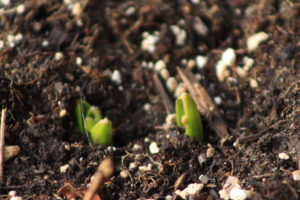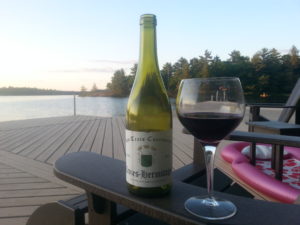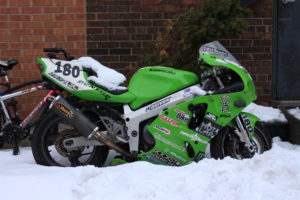March 6: On Remembrance Day I attended the Air Force ceremony in Mt. Pleasant Cemetery. I then visited the Kent family plot to say hello to my Dad and aunts and uncles, all of whom were in the RCAF or RAF during the Second World War. My Mother says she joined the RCAF as an act of rebellion – to assert independence from her parents – and to be different from her younger sisters whom she perceived to be following her in everything she did. Although she was sure her Father would never stand for it, her sisters ultimately also followed her into the service and they all played a role in supporting those who flew.

Her brother – my uncle Martin (who was called Bussie for no reason that anyone could remember) – was a Mosquito pilot. He was credited with downing two aircraft and two flying bombs, and damaging another aircraft. As I have written elsewhere, my Dad was a navigator on a Halifax bomber. He flew 33 missions during late 1944 and early 1945. My uncle Doug was in the RAF, and uncle James was in the Navy, although I don’t know much of their stories. Remarkably, everyone escaped unscathed.
All of this got me thinking about my Grandfather who I had been told was a pilot in World War One. For some reason, that seemed unlikely to me and I never followed up on that story until after my visit to his grave on Remembrance Day. A Google search yielded a link to an entry at the Canadian Great War Project, which showed that he enlisted in September, 1916 at 19 years of age and, as Flight Lieutenant Harry Gowans Kent, was assigned to 11 Squadron of the Royal Flying Corps.

Wikipedia – a paragon of truth – says: “No. 11 Squadron of the Royal Flying Corps was formed at Netheravon in Wiltshire on 14 February 1915 for “fighting duties” … Since all previous squadrons (Royal Flying Corps or other nations) were reconnaissance or army co-operation units, 11 can make a claim to be the oldest dedicated fighter squadron in the world.” It goes on to say that the squadron flew Bristol Fighters and was deployed to the Western Front (1915–1918), Loos in the Somme (1916), Arras and Cambrai (1917), and the Somme (1918). Since the Squadron was based at Fienvillers, France, he likely saw action over the Somme.
All of this history makes me wonder about the mind-set of these men (for it was only men in combat). My Dad said that he had finished high school and thought that the Air Force might be a good experience going forward. He seemed to think that he had few other options at the time. Many of his friends had also enlisted but surely all of them must have thought of the consequences at some point. It was well known that men – thousands of men – were getting killed, and to willingly accept that prospect takes tremendous courage.
It’s a shame that we didn’t hear more of this history when these brave men and women were alive. For whatever reason, they spoke little about their experiences and, perhaps more accurately, we were not overly inquisitive or actively listening. As a child, both wars seemed like ancient history to me, although my Father’s experience in the Second World War was barely 20 years past when I was in my teens. I now wish that I had been more interested in, and receptive to my family history. The remarkable stories these men carried are now lost forever.
http://canadiangreatwarproject.com






